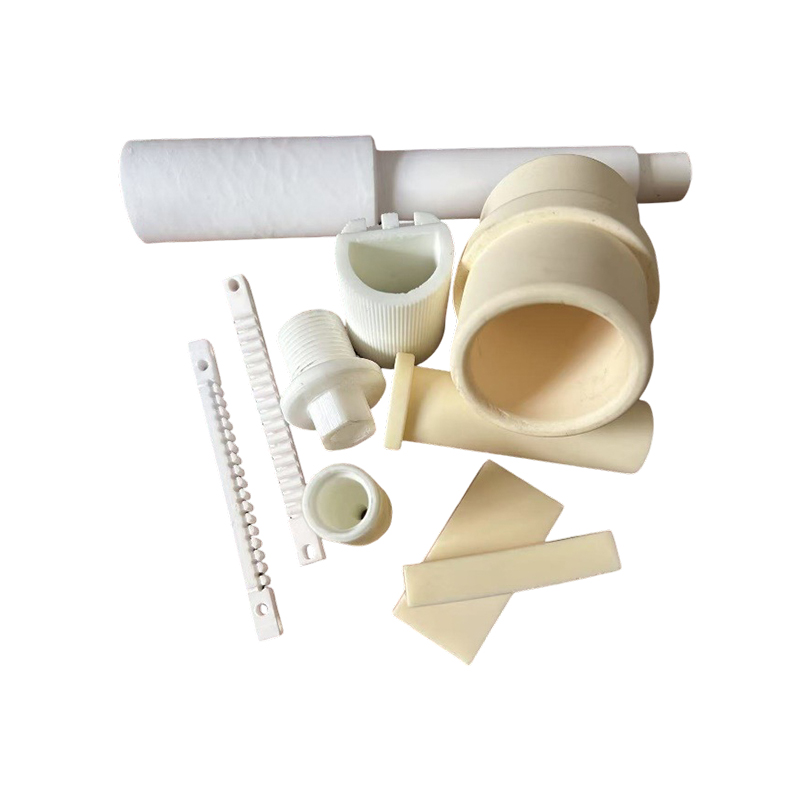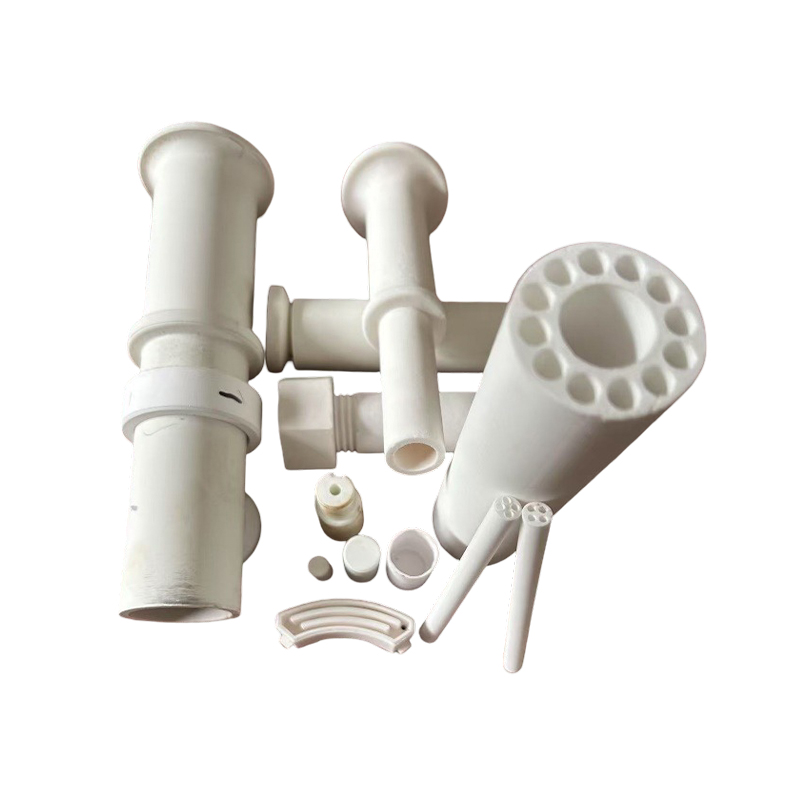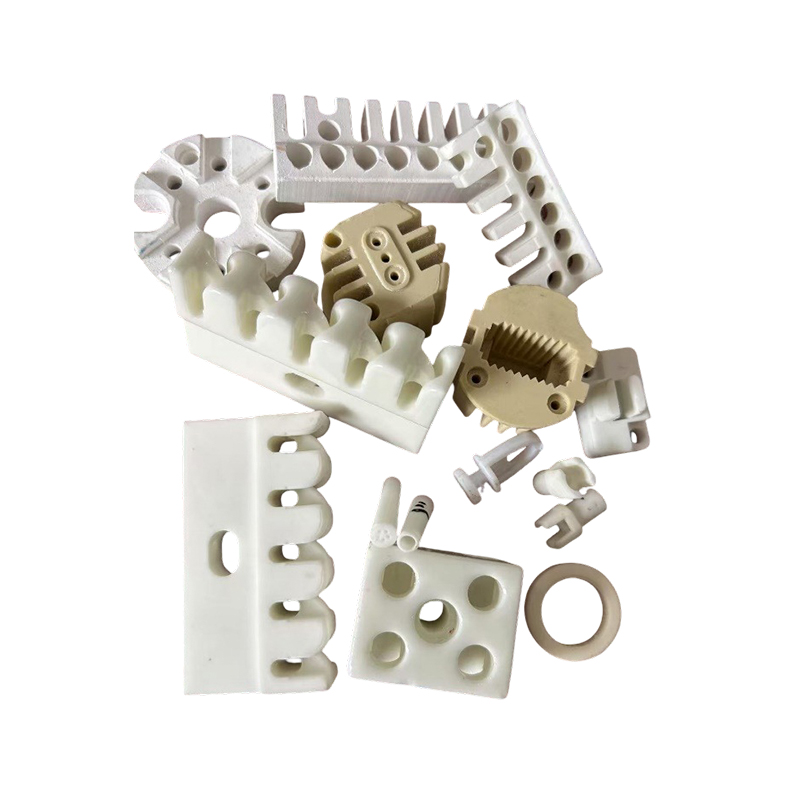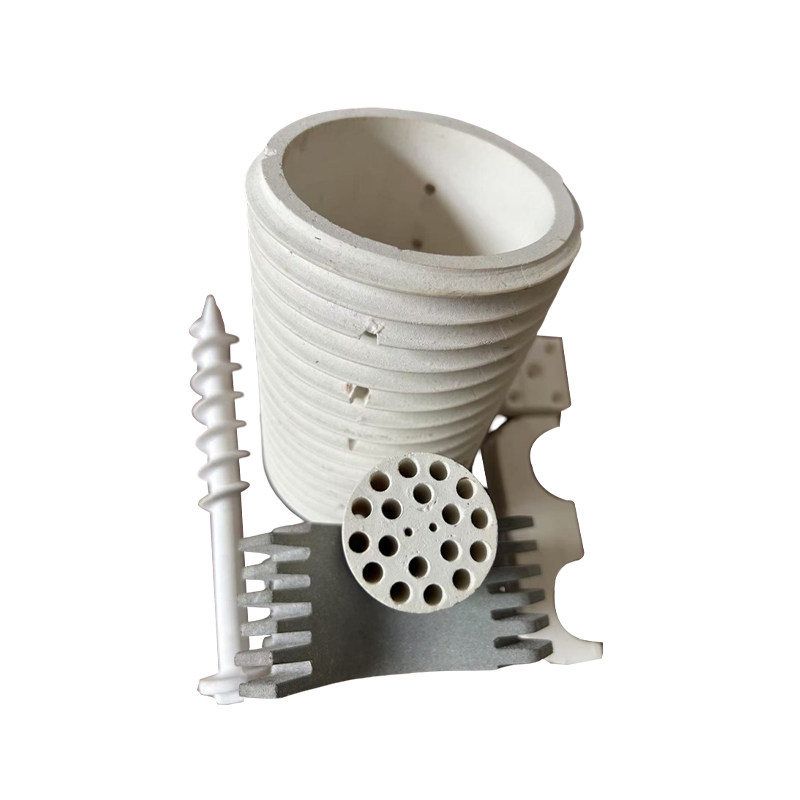How do alumina ceramics maintain their mechanical strength stability at high temperatures?
Release Time : 2025-09-19
Maintaining mechanical strength stability in alumina ceramics at high temperatures requires a synergistic approach across multiple dimensions, including material composition design, microstructure control, additive optimization, and post-processing, to address challenges such as high-temperature creep, grain boundary weakening, and thermal stress.
The high-temperature mechanical strength stability of alumina ceramics primarily depends on the stability of their crystal structure. Alumina (Al₂O₃) is primarily an α-phase at high temperatures, and its ionic bonding properties give the material a high melting point (approximately 2050°C) and excellent thermal stability. However, when pure alumina ceramics are subjected to long-term high-temperature service, atomic diffusion at the grain boundaries can occur, leading to grain growth and grain boundary weakening, which in turn triggers creep deformation. To inhibit this process, high-melting-point oxides (such as magnesium oxide and yttrium oxide) are added to form secondary phase particles. These particles pin the grain boundaries, inhibiting abnormal grain growth and strengthening the grain boundary bonding. For example, the addition of yttrium oxide not only stabilizes the grain boundaries but also reduces the migration of oxygen vacancies at high temperatures, thereby reducing the creep rate.
Microstructural uniformity is key to maintaining high-temperature strength. Traditional sintering processes can easily lead to residual porosity or localized stress concentrations within alumina ceramics. These defects can become sources of crack initiation at high temperatures. By optimizing the sintering schedule (such as a two-step sintering method) or incorporating a hot isostatic pressing (HIP) post-treatment, porosity can be significantly reduced and density improved. Furthermore, the use of nano-alumina powders can refine the grain size and increase the grain boundary area, thereby dissipating high-temperature stresses and slowing crack propagation. Research has shown that alumina ceramics with grain sizes less than 1 micron can achieve a 30% increase in flexural strength at high temperatures.
The synergistic effect of additives is crucial for high-temperature stability. Zirconia (ZrO₂), as a toughening phase, absorbs crack propagation energy through phase transformation toughening, while its high elastic modulus inhibits high-temperature plastic deformation. Introducing partially stabilized zirconia (such as 3Y-TZP) into the alumina matrix can achieve the dual effects of microcrack toughening and grain boundary strengthening at high temperatures. Furthermore, the addition of secondary phases such as silicon carbide (SiC) or boron nitride (BN) can offset high-temperature thermal stresses through residual compressive stress, further improving the material's thermal shock resistance. The combined use of these additives requires strict control of their ratios to avoid the introduction of new defects due to thermal expansion coefficient mismatches.
Surface modification technologies can significantly enhance the high-temperature wear resistance of alumina ceramics. Chemical vapor deposition (CVD) or physical vapor deposition (PVD) techniques can form an aluminum oxide-titanium dioxide (Al₂O₃-TiO₂) composite coating on the ceramic surface. This coating maintains hardness and chemical stability at high temperatures, effectively insulating the substrate from the corrosive effects of high-temperature gases. Laser surface remelting rapidly refines the surface grains, forming a dense amorphous-nanocrystalline composite structure, thereby enhancing surface fatigue resistance. These surface treatments can extend the service life of alumina ceramics in high-temperature friction environments.
Optimizing the heat treatment process can eliminate residual stresses caused by machining and improve high-temperature dimensional stability. Annealing fully releases internal stresses in the material by controlling the heating rate and holding time, preventing stress relaxation and resulting strength loss during high-temperature service. For complex-shaped alumina ceramic components, a graded annealing system can be employed to gradually eliminate thermal stress differences between different regions. Furthermore, rapid densification processes such as hot pressing or spark plasma sintering (SPS) can achieve high densities at low temperatures, reducing grain coarsening during high-temperature sintering and preserving more grain boundary strengthening.
Targeted design for specific application scenarios is a key approach to optimizing high-temperature stability. In the aerospace sector, alumina ceramics must withstand extreme thermal cycling and mechanical loads. Functionally gradient materials (FGMs) are essential for this purpose, creating a highly thermally conductive surface layer for rapid heat dissipation while maintaining a high-strength matrix. For static, high-temperature applications such as industrial furnace linings, prioritizing creep resistance can be achieved by increasing the yttrium oxide content or introducing rare earth oxide additives to maintain strength during long-term service.







